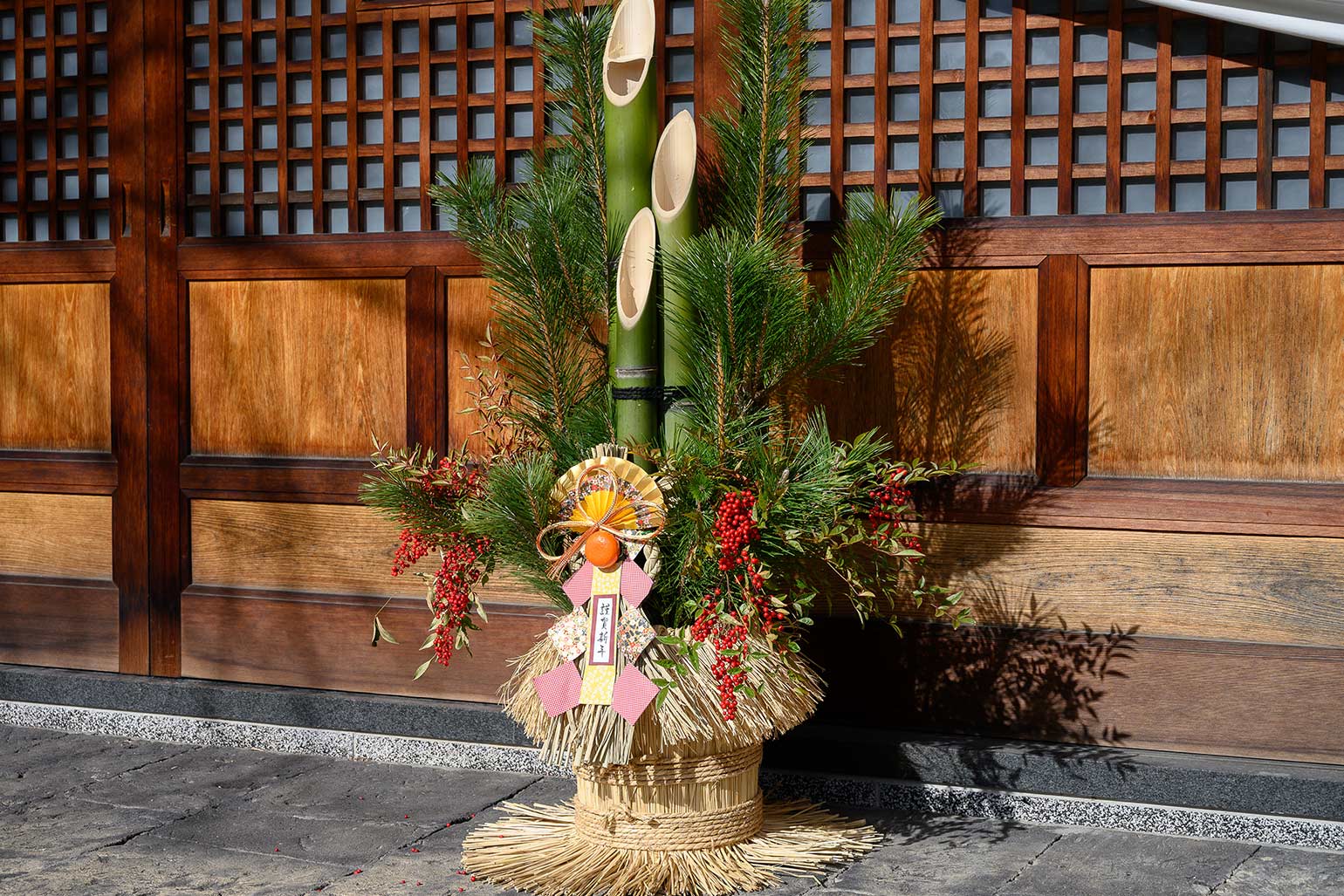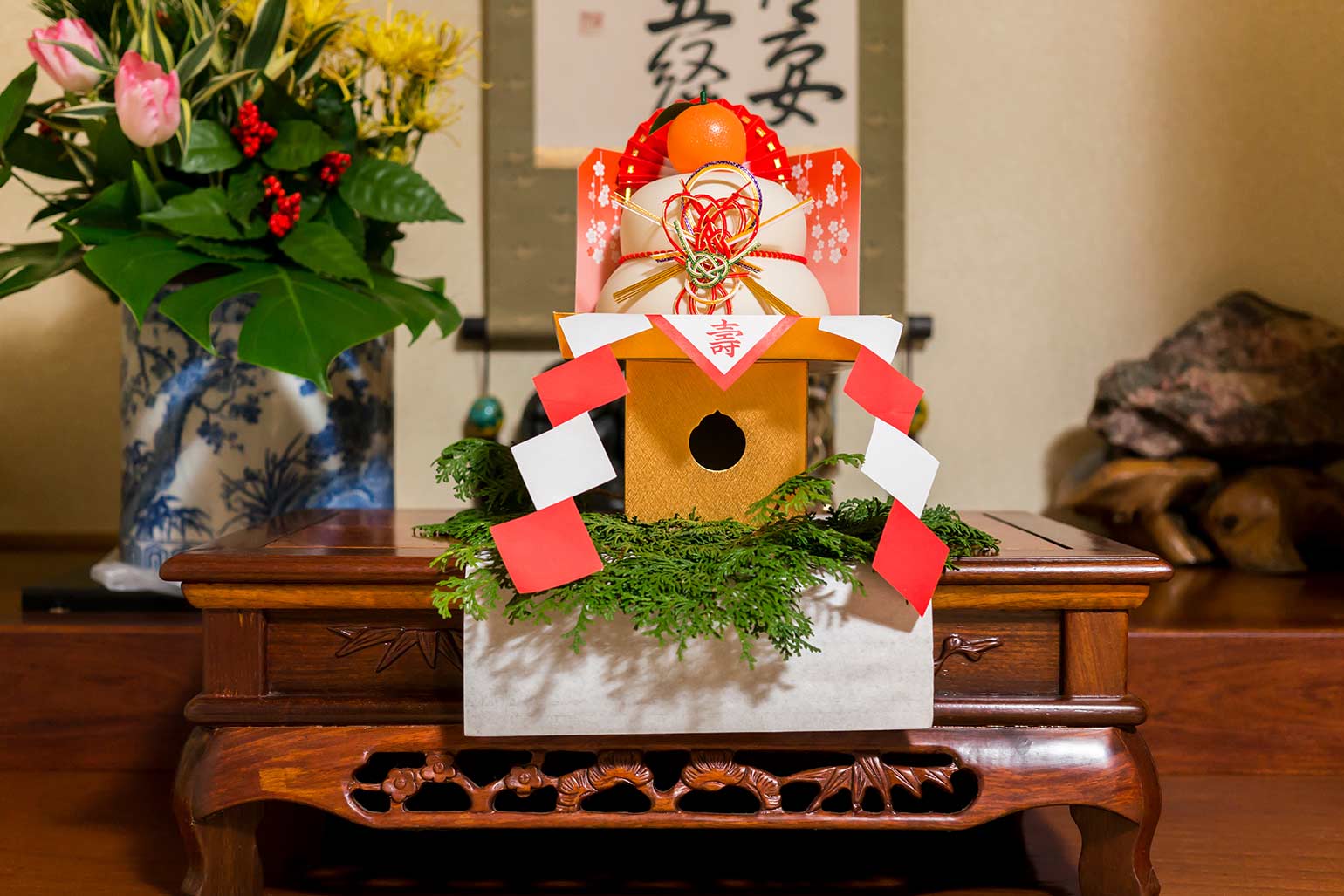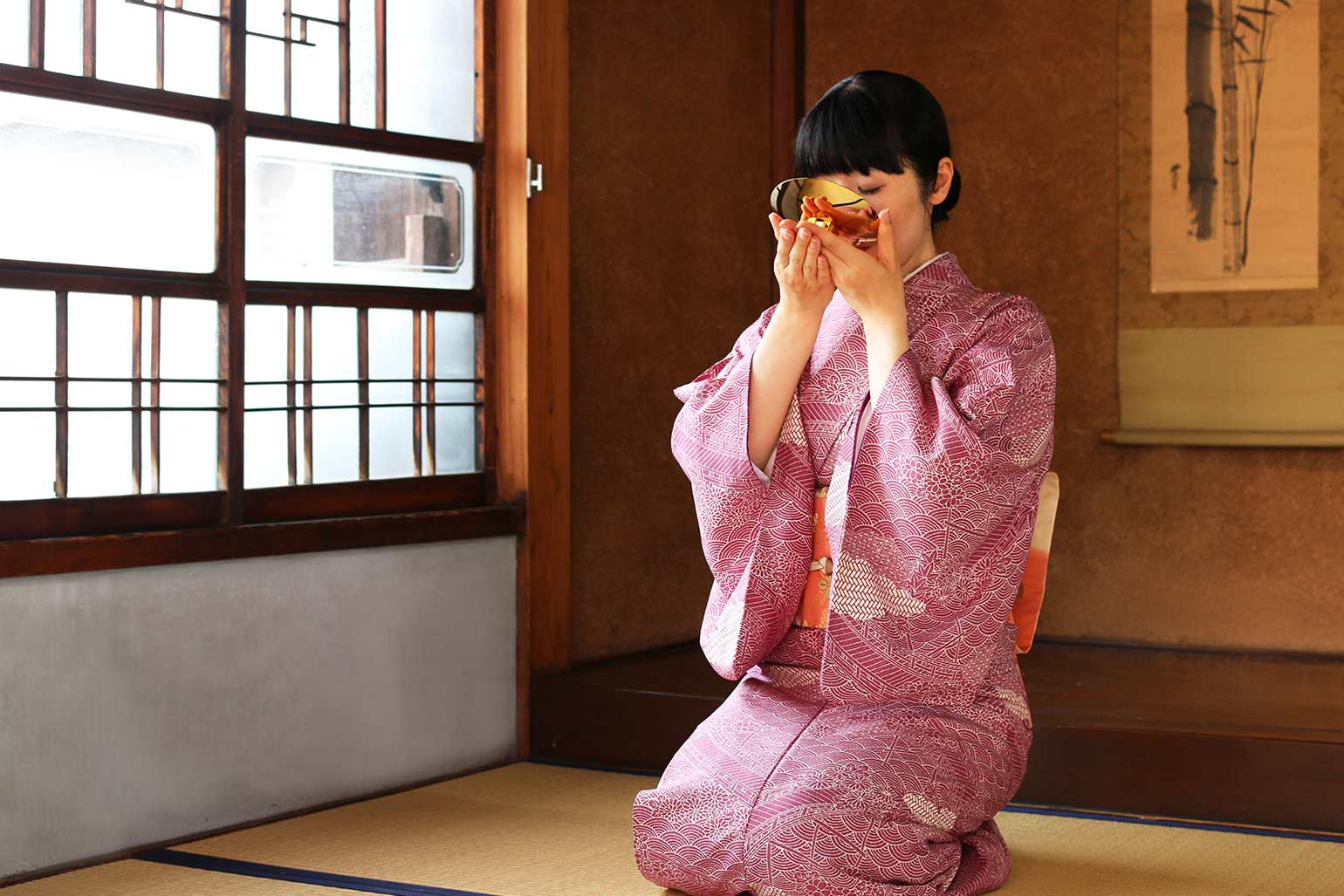When celebrating holidays, anniversaries, etc., decorations are very important, don’t you think so? They will be an essential element in creating the mood of the events. Just as there are trees and wreaths for Christmas and jack-o’-lanterns for Halloween, there are also decorations for celebrating the Japanese New Year. All of these decorations are for good luck and contain wishes for happiness and a bountiful harvest for the year. We will show below some of the New Year’s decorations that have become well established in today’s households in Japan.
Kadomatsu (pine tree decorations)

In Japan, “pine tree”, “bamboo”, and “Japanese plum” are considered to be auspicious plants. “Pine tree” is an evergreen tree with lush beautiful green leaves even in winter, and is considered a symbol of longevity and good health. “Bamboo” is a symbol of purity because of its beautiful, fresh green color and the way it grows straight and upright all year round. “Japanese plum” blossoms are a symbol of happiness or joy because they bloom beautifully during the cold winter months… The “kadomatsu” is a decoration using such “pine tree” and “bamboo”, which are considered to be good luck plants. There are various theories, but it is said that the Chinese custom was originally introduced to Japan. Although there are various styles in their construction or the way of displaying them, generally Japanese “kadomatsu” are placed at the entrance of a house (in front of the gate).
Shimenawa (sacred rope)

Have you ever noticed the large, thick, straw rope-like decorations hanging at the entrance to the Shrine’s main building? It is one kind of decoration called “shimenawa”. It is a important ritual instrument that marks the boundary that separates the Shinto realm from this world at the shrine. The inside of a shrine’s building is considered the domain of the god it enshrines. For this reason, a “shimenawa” is used to ward off “kegare(impurities)” from the outside world, right? The custom of displaying “shimenawa” has spread to the general public, and small shimenawa can be seen hanging at the gates or entrances of houses during the New Year’s holiday season. Since these decorations are used to wish for “peace and safety” or “family safety,” they are sometimes attached to private cars and bicycles.
Kagami-mochi (rice cake decorations)

It is a rice cake decoration in the shape of a round mirror that is used as an offering to the god of grain (called “Toshigami”) during the New Year’s season, as well as a stand-in for the god. In other words, it is believed that God dwells in that rice cake decoration. They are usually displayed in an “tokonoma(alcove)” or on a “kamidana(Shinto altar)”. It is commonly known to decorate a stack of large and small round rice cakes topped with an “daidai orange (one of citrus fruit)” and a dried persimmon on a skewer. For more information, please refer to our previous article “O-Mochi (Rice Cake)”. Incidentally, the mochi (rice cake), daidai orange, and persimmon skewer used in the “Kagamimochi” are said to represent the three sacred objects: the Yata-no-kagami(mirror), the Yasakani-no-Magatama(jewel), and the Ama-no-Murakumo-no-Tsurugi(sword). It really makes us realize that our Japanese predecessors must have had a wonderful artistic sense.
O-Toso Set ~Extra topic


“O-Toso” is a type of alcohol drunk during the New Year’s holiday to ward off evil spirits and wish for longevity and good fortune. This sake is made from a Chinese herbal medicine called “tososan” combined with sake and mirin. It has a sweet taste with a quite unique flavor. There is a certain format for the sake set used to drink this O-Toso. The set of drinking vessels used to drink the O-Toso consists of the following. A sake bottle called a “choshi” in which O-Toso is poured. Three types of “Sakazuki(sake cups)”. These sakazukies come in sets of three different sizes: small, medium, and large. There are also sets of five different types of sakazukies. A sakazuki stand to put those sakasukies on top of each other. “O-Bon(a tray)” on which all those drinking vessels are placed. These vessels are made of lacquerware, ceramics or glass. They are so beautiful and festive to look at that some households display them during the New Year’s holiday. There are also rules about how to drink O-Toso. It is customary to drink from small, medium, and large sakazukies in the order of youngest to oldest. In Japan, the “O-Toso” custom was apparently practiced at court in the Heian period (794-1185), and it is said that the custom was originally from China. Nowadays, “tososan” is available on the market in teabag form, so it is easy to drink at home. However, unfortunately, it seems that these days, although many Japanese people often use the “O-Toso” set for New Year’s day, they often use just Japanese sake or other alcohol for drinking…




